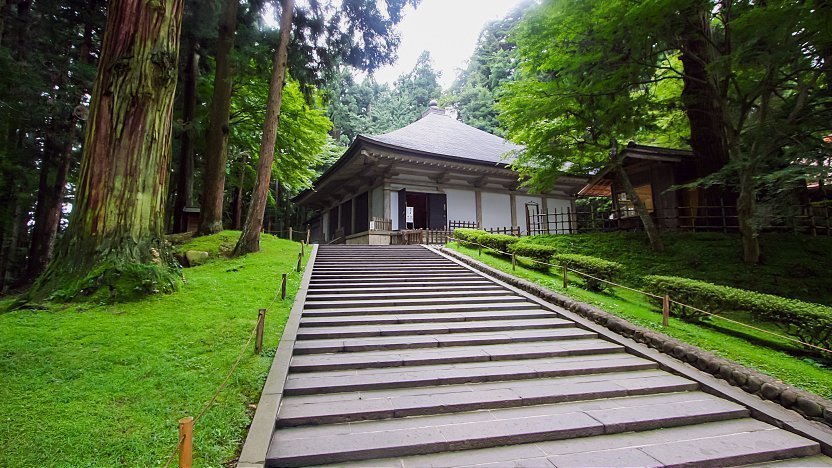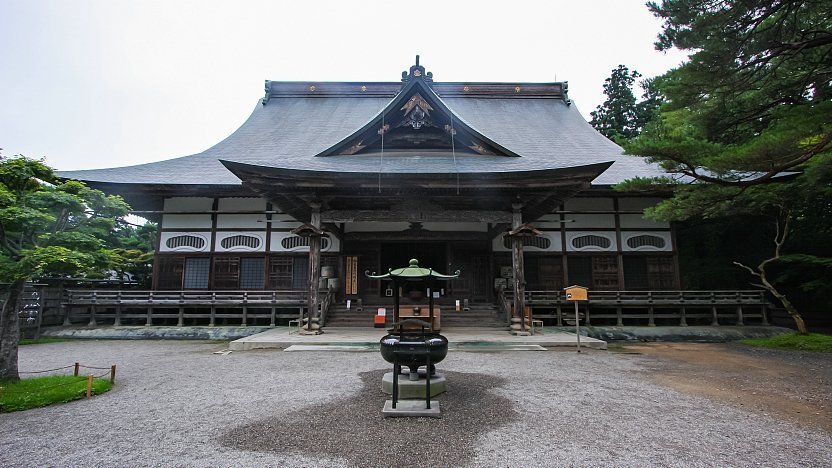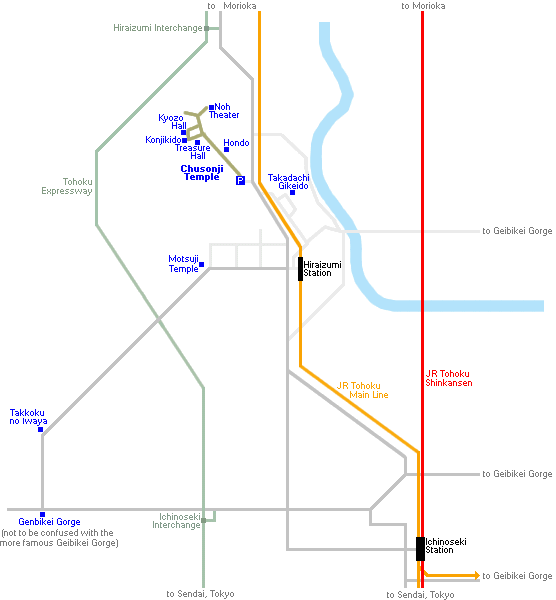
Hiraizumi's most famous attraction, Chusonji (ÆåæĖÄø, Chūsonji) was established in 850 as a temple of the Tendai sect of Buddhism. The temple came to prominence when the northern branch of the Fujiwara clan moved their base to Hiraizumi. At its peak, the temple consisted of a large network of dozens of buildings.
With the fall of the Fujiwara at the end of the 12th century, Chusonji suffered likewise so that now only two buildings from that era remain intact. Luckily, among these is the most spectacular, the Konjikido. Similar to Kyoto's famous Kinkakuji (Golden Pavilion), Konjikido is a hall completely covered in gold. It dates back to 1124 and stands inside another building for protection. Photography of the Konjikido is prohibited.

The other building that survives from the period of prosperity under the Fujiwara is the Kyozo Hall, which served as a repository for sutra (Buddhist scripture). While not nearly as impressive as the gilded Konjikido, it nonetheless even predates that building by 16 years.
Chusonji has a number of interesting buildings apart from those dating back to the Fujiwara period. The main rituals and rites of the temple are performed at the Hondo (main hall), and there is a Treasure Hall that houses some impressive artifacts. There is also a beautiful noh theater stage. Chusonji's attractions are located along a network of paths that extend about one kilometer into the forest.

Getting there and around
From Hiraizumi Station, Chusonji can be reached in a five minute ride by regular bus, in a ten minute ride by the Hiraizumi Loop Bus or in a 20-30 minute walk.
How to get to and around Hiraizumi

Hours and Fees
Hours
Closed
Admission
Questions? Ask in our forum.


